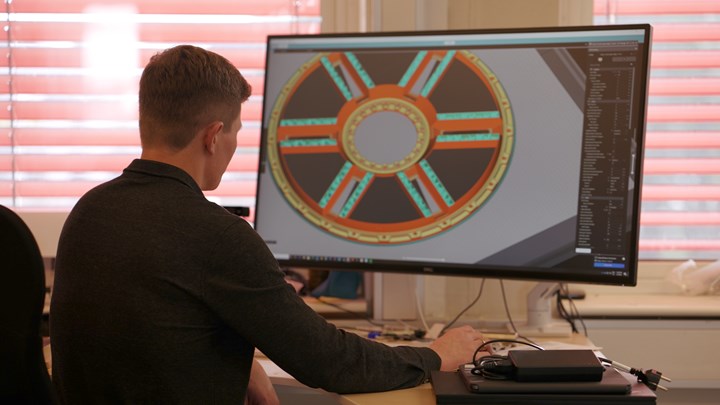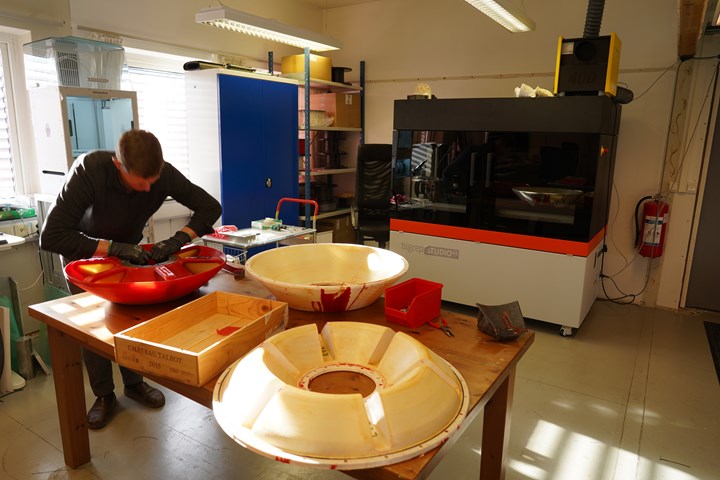How An Airline Addressed Supply Chain Issues with 3D Printing
COVID-19 not only grounded most of Scandinavian Airlines’ (SAS) fleet in 2020, but also limited its access to engine covers critical for safe storage. CNE Engineering used BigRep machines to 3D print molds to produce the covers.
The onset of the COVID-19 pandemic halted most travel, resulting in the immediate grounding of 62% of passenger planes. Airplane engines need protection from the elements when parked for long periods, and standard procedures require covers to prevent damage from moisture and other objects. With the sudden grounding of many planes, Scandinavian Airlines (SAS) did not have the necessary inventory of off-the-shelf engine covers, exhaust plugs and more. The domino effect of supply chain shortages worldwide meant that it was impossible for SAS to simply order more equipment to protect its fleet.
To offset the shortage, SAS determined that compressing the supply chain was key and prioritized tapping more locally available resources. The airline considered 3D printing solutions, but needed technology large enough to produce engine exhaust covers. It turned to CNE Engineering in Norway to find a solution.
The engine exhaust covers would need to withstand high temperatures, exhibit chemical and UV resistance, and be soft enough to not damage the engine upon removal and installation. Based on these requirements, CNE determined castable urethane, a widely available and low-cost material, would be the best option.
Nathan Brown sets printing parameters for the engine covers on BigRep’s BLADE slicer software. Photo Credit: BigRep
According to Nathan Brown, managing director of CNE, "There was an opportunity to not only fill their need for this tool they couldn't acquire through the normal supply chain, but we also saw the opportunity to make it better."
CNE used two machines from BigRep, a company specializing in large-format FFF machines, to 3D print molds to produce several cast parts in varying sizes. The BigRep One's cubic meter build volume accommodated the primary, large-scale piece and the Studio model printed smaller features, such as removable mold inserts.
Materials for the different parts spanned from BigRep’s bio-based PLX for the outer shells to Hi-Temp CF for the center core and TPU for the insert molds. CNE was able to meet timing requirements as tooling was printed in a few days, and castings required only hours.
Jason Deadman, production engineer at Scandinavian Airlines, fits a cast exhaust plug on an aircraft. Photo Credit: BigRep
“There is so much that goes into aircraft maintenance that you don't see,” says Jason Deadman, production engineer at SAS. “Technology is something SAS is embracing.” Within two months of the kick-off meeting, SAS received its initial order, highlighting additive manufacturing’s capacity for fast production, design flexibility, low volume and cost and minimal waste.
The success of the printed tools also illustrates how AM was able to compress the supply chain for CNE and its customer. BigRep's chairman of the board and managing director of 360 Aircraft Finance GmbH Peter Smeets says, “We believe this is only the beginning and that 3D printed solutions will become the gold standard for custom, cost-effective manufacturing free from traditional supply chain issues.”














.png;maxWidth=300;quality=90)



